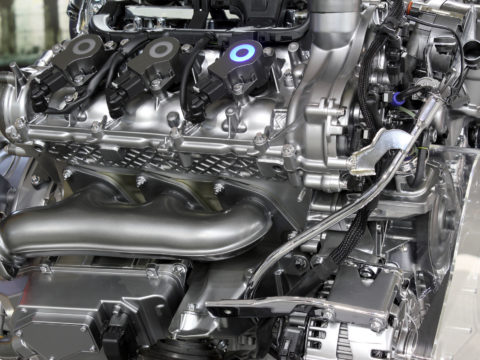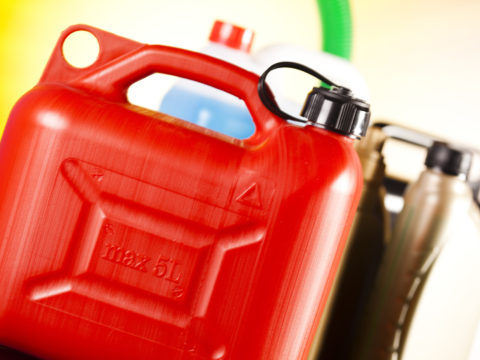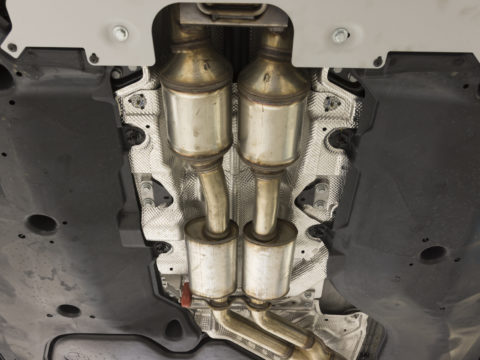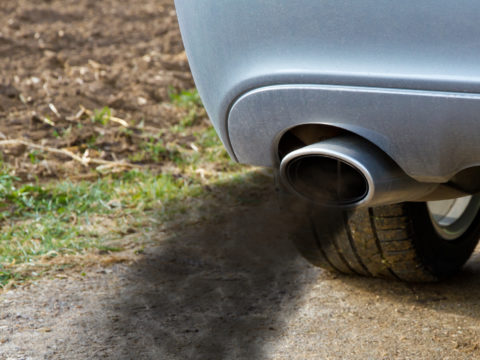Internal combustion engines produce light grey exhaust. Sometimes, however, exhaust takes on a different color. Each color of exhaust means your vehicle is dealing with different challenges.
Blue exhaust, for instance, usually means your vehicle is burning oil.
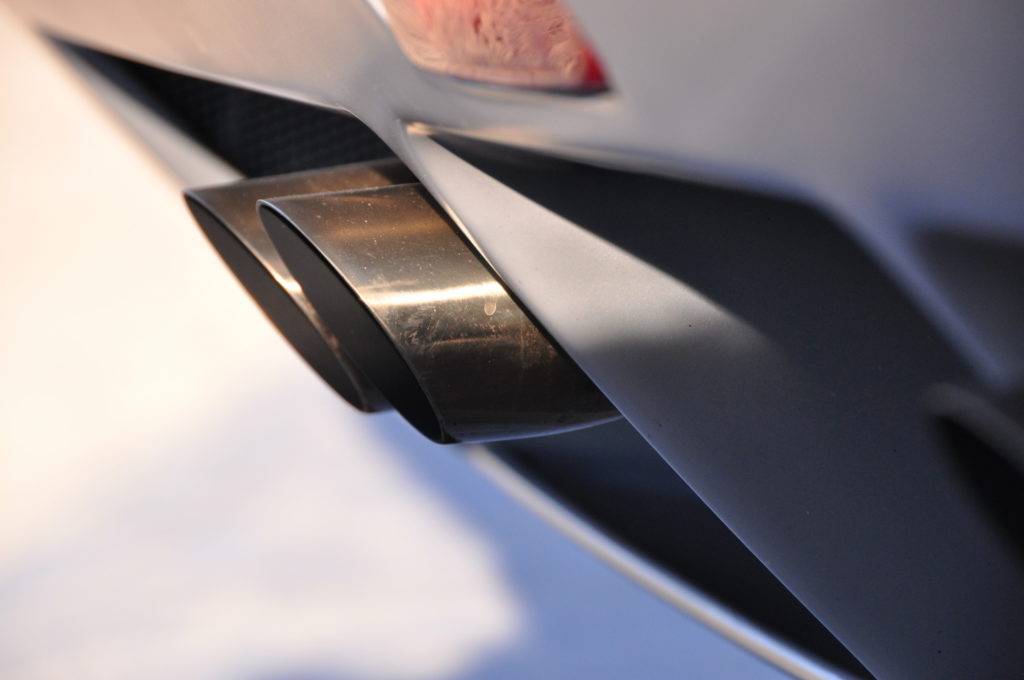
Here is what each color means and what you can do about it.
Contents
Exhaust Smoke Colors
Your vehicle utilizes multiple fluids. When those fluids leak, they often ignite as they work their way through the various engine systems that help your vehicle run.
When they burn, the smoke produced comes in different colors.
White Smoke
Thick, cloudy, whitish smoke usually means coolant is leaking and incinerating as it goes through the exhaust system.
When that happens, your engine is at risk of overheating, which can lead to many problems, including the engine seizing up in extreme heat and blown gaskets.
Blue Smoke
Blue smoke usually means your vehicle is burning oil. That means you have an oil leak, although how large of one is impossible to tell.
The causes include bad seals, lack of lubrication of engine parts, or a plug gasket that has rotted out.
While burning oil out the back of your vehicle might seem like a big deal, it is not as serious as it sounds.
If your vehicle is new, you want to get it checked out because it may mean you have other parts that are prematurely aging.
If it is an older vehicle, you can usually manage an oil leak by topping off your oil levels.
Of course, it is wise to see a mechanic if the issue grows.
Black Smoke
In almost every case, a vehicle belching black smoke has an obstructed or clogged air filter. When that happens, your engine works harder to keep running at the speed you want.
A clogged air filter can lead to:
- Excess fuel is pushed through the system affecting the air-fuel ratio
- Poor gas mileage
You should first start with changing the air filter. If the vehicle still is belching thick, black smoke, adapting the fuel injector air-fuel ratio can fix the problem.
A mechanic should do the latter, but you can do the former with a trip to a local auto parts store.
Gray Smoke
Gray smoke does not happen often, but when it does, it usually means your vehicle is burning excess oil. Turbochargers are particularly susceptible to this if they are not maintained properly.
Gray smoke can be managed the same way blue smoke can be managed.
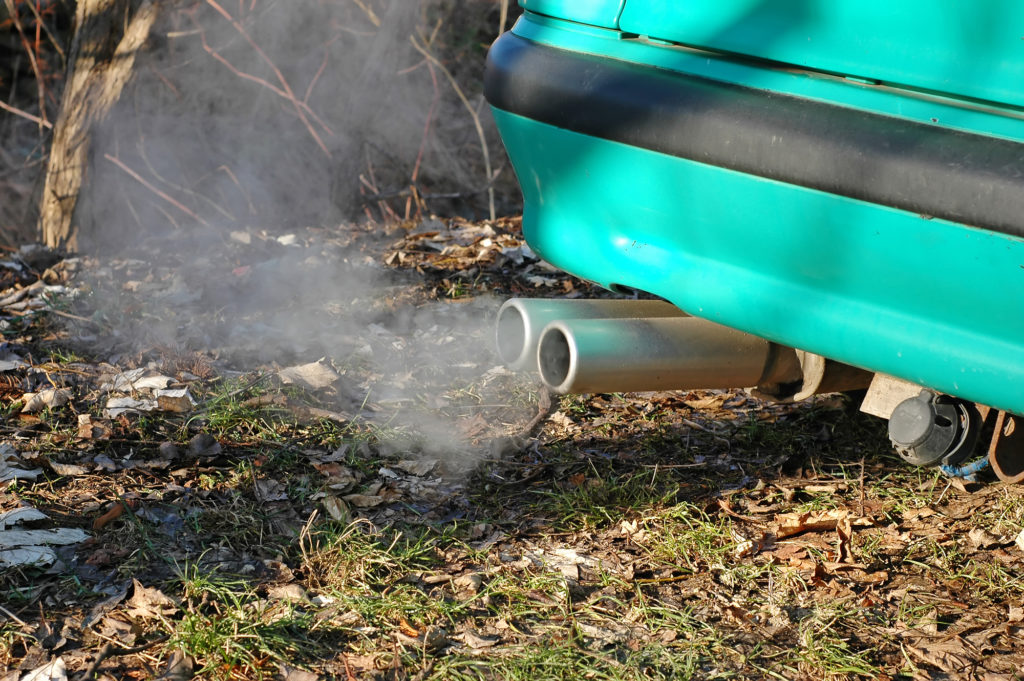
What Does Blue Smoke from Car Exhaust Mean?
Blue smoke in your exhaust means that oil is getting into your engine and burning as it combusts. There are a few different possibilities that cause blue exhaust, but all are due to the wear and tear of engine components.
Blue smoke can happen in newer vehicles if the vehicle has been in an accident or has a manufacturer defect.
Most cases of blue smoke happen in older vehicles with lots of miles.
Is Blue Smoke from Exhaust Bad?
Whether blue smoke is bad depends on two things: why it is present, and how bad the situation is that caused it.
As your vehicle ages, things wear out. Seals rot or rip. Valves lose flexibility and rot. Virtually everything on a vehicle will eventually succumb to wear and tear if left on there long enough.
This cycle is accelerated when a car is not maintained well.
What Causes Blue Exhaust Smoke?
The easy answer is that your engine and exhaust system are burning oil. The more complicated answer is that something in your engine has been broken or has given way to wear and tear.
Broken Seals
These happen over time. The materials in the seals rot or wear away. Trauma to the vehicle can also cause seals and valves to wear out or break.
Oil Overflow
If you put excessive oil in your vehicle’s crankcase, you can create a situation where the amount of oil overrides any attempts to limit its access to various parts of the engine.
Excess oil affects the engine the same way a flooded lake works. Dams hold the water in, but if there is too much water, eventually, the dam is breached, and the water overflows.
Broken Valves
The cause here is the same as with seals. Most often, a broken or worn valve happens due to exceptionally long service as the vehicle accumulates miles.
Engine Damage
If the vehicle has been in an accident, sufficient damage to the engine can cause the oil to seep into the combustion process or exhaust system, creating blue smoke.
In this case, the only fix is to scrap the engine or learn to live with the issue by monitoring the oil supply and topping it off when needed.
How Do I Get Rid Of Blue Smoke From Exhaust?
In most cases, you cannot because the fix is more costly than the problem. You can change out valves or seals, but that usually is very expensive.
If the vehicle is older, the expense of doing that is prohibitive compared to purchasing another.
If you learn to live with it, monitoring and replacing oil is the only strategy that works.
Can You Drive with Blue Smoke From Exhaust?
You can to a point where the loss of oil exceeds the benefit of using the vehicle.
For example, if you are going through several quarts of oil in a week, driving that vehicle, unless you have no choice, becomes very expensive.
As long as you keep the oil level up, you should not have issues with blue smoke.
How Much Does it Cost To Fix Blue Smoke From Exhaust?
In most cases, fixing blue smoke in the exhaust is not worth the cost of the fix. If the vehicle is expensive or new, that cost might be justified, but in most cases, it is not.
That said, the overall cost will depend on why the oil is getting into your exhaust.
It is safe to assume that none of the fixes will be inexpensive.

